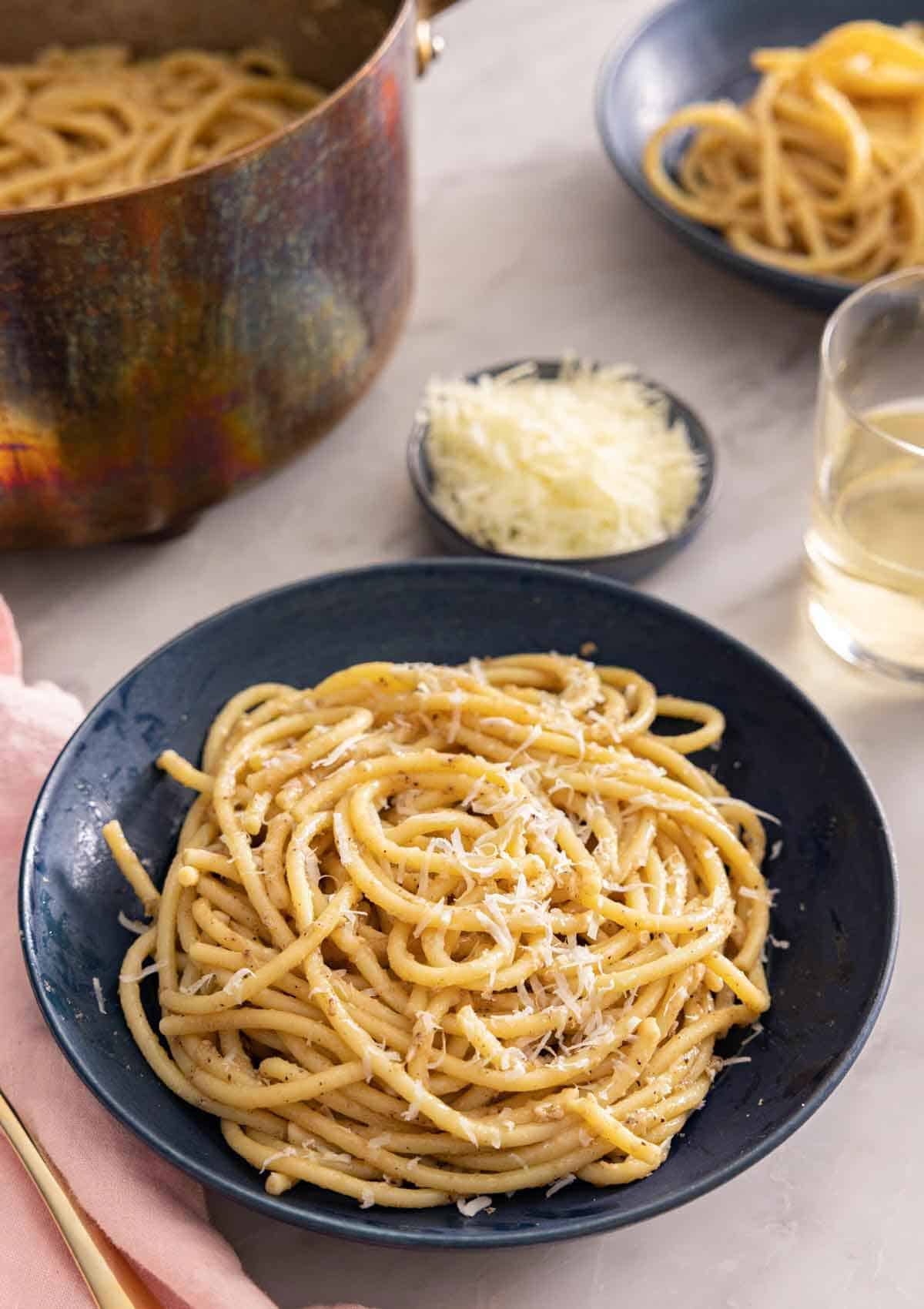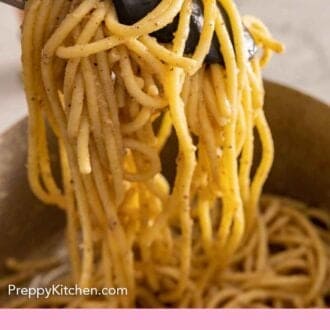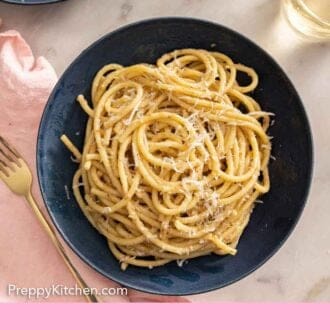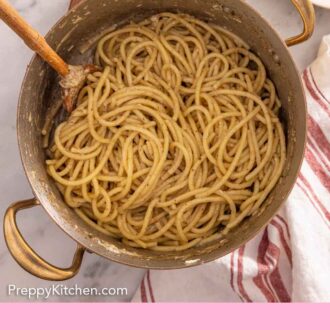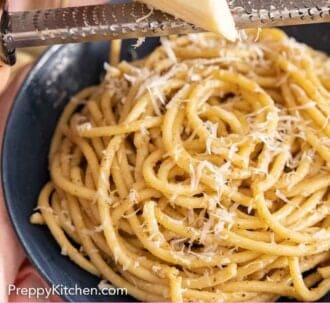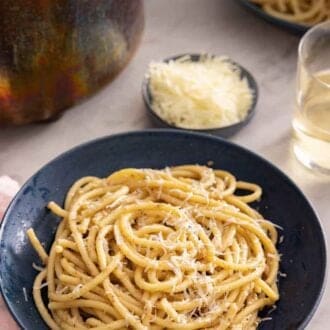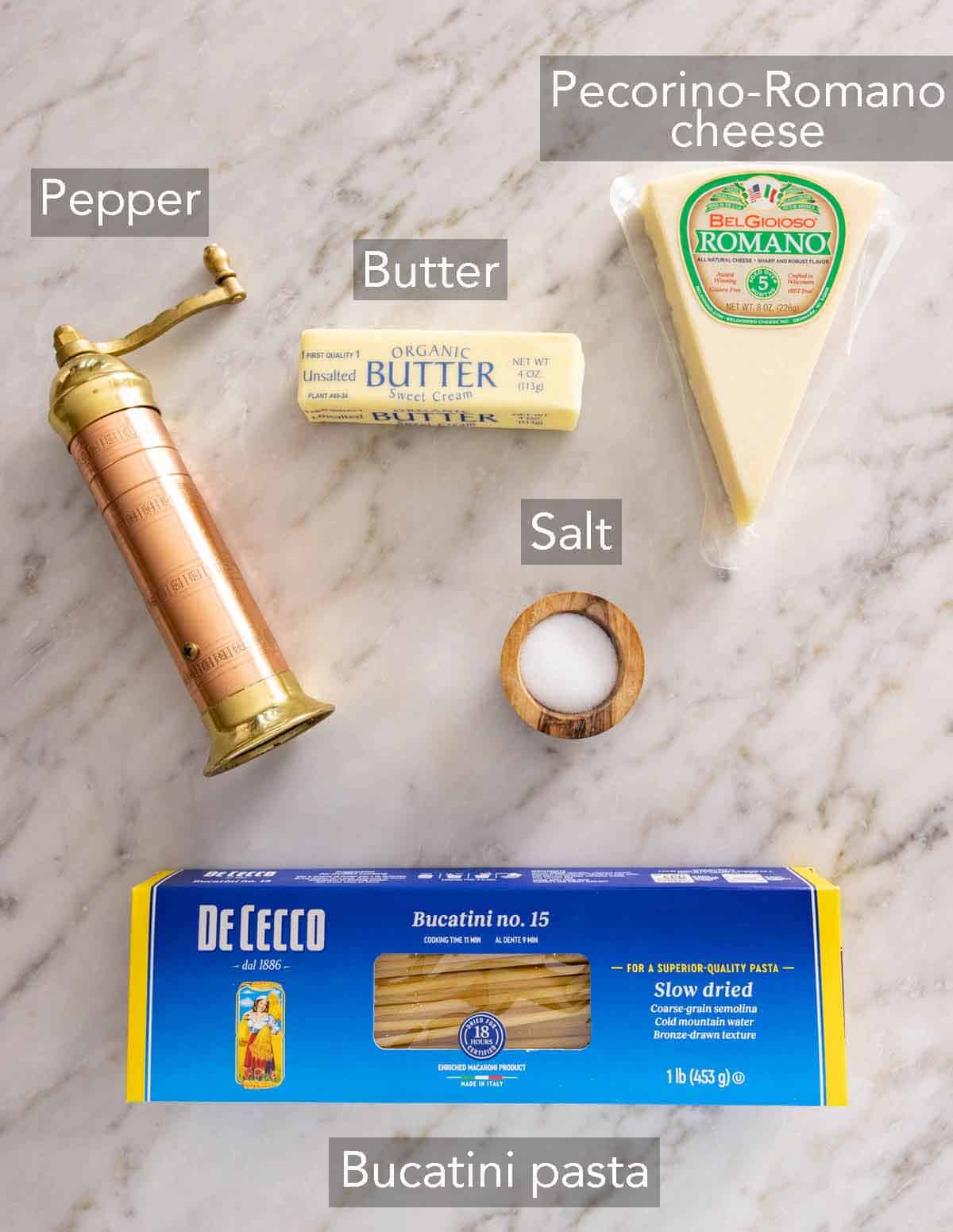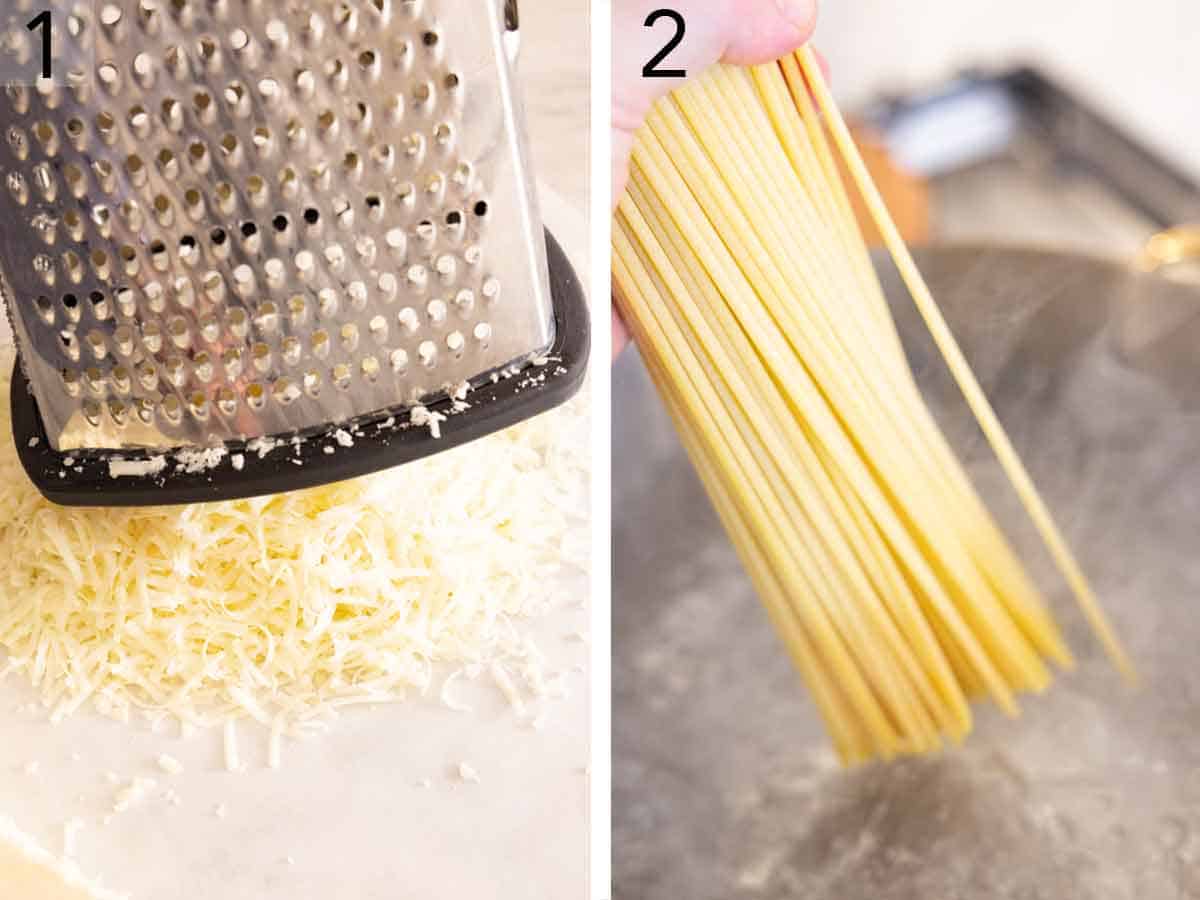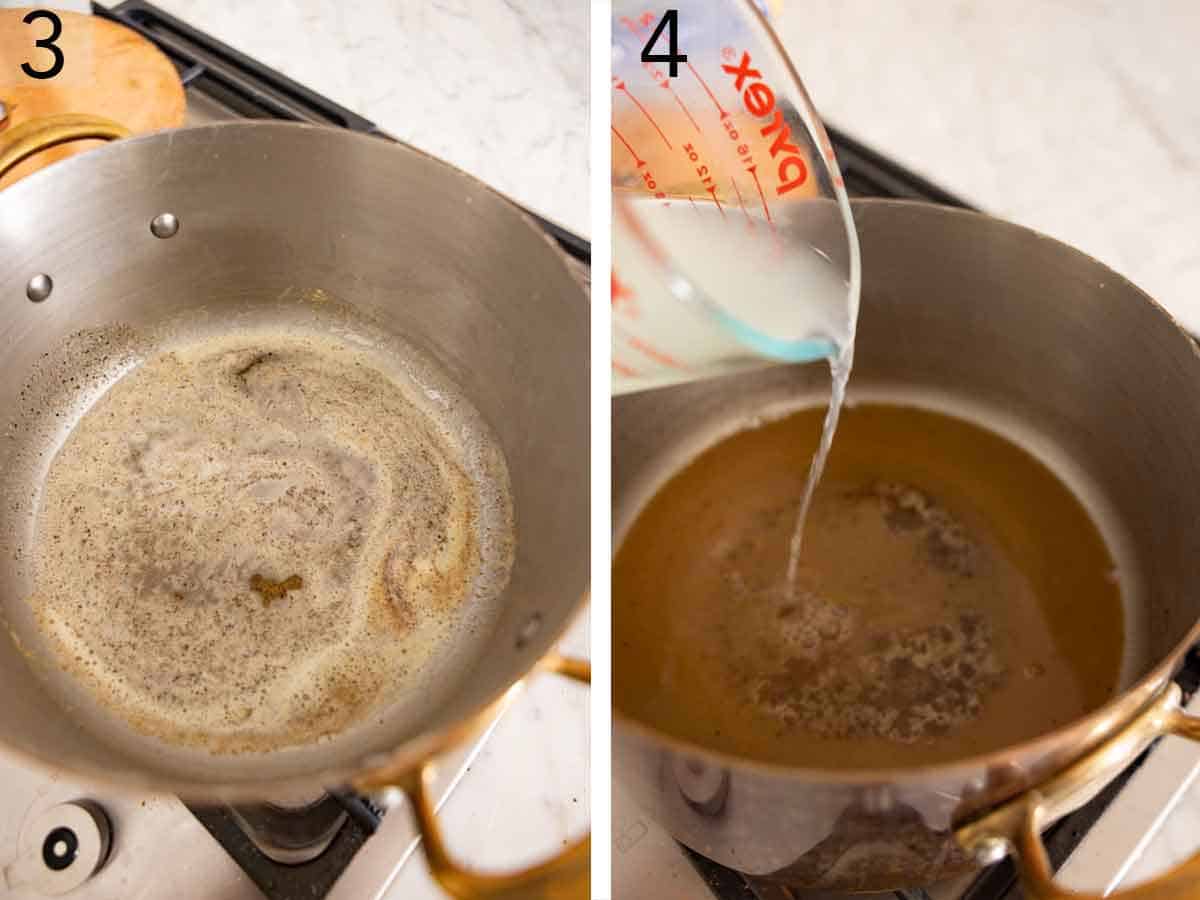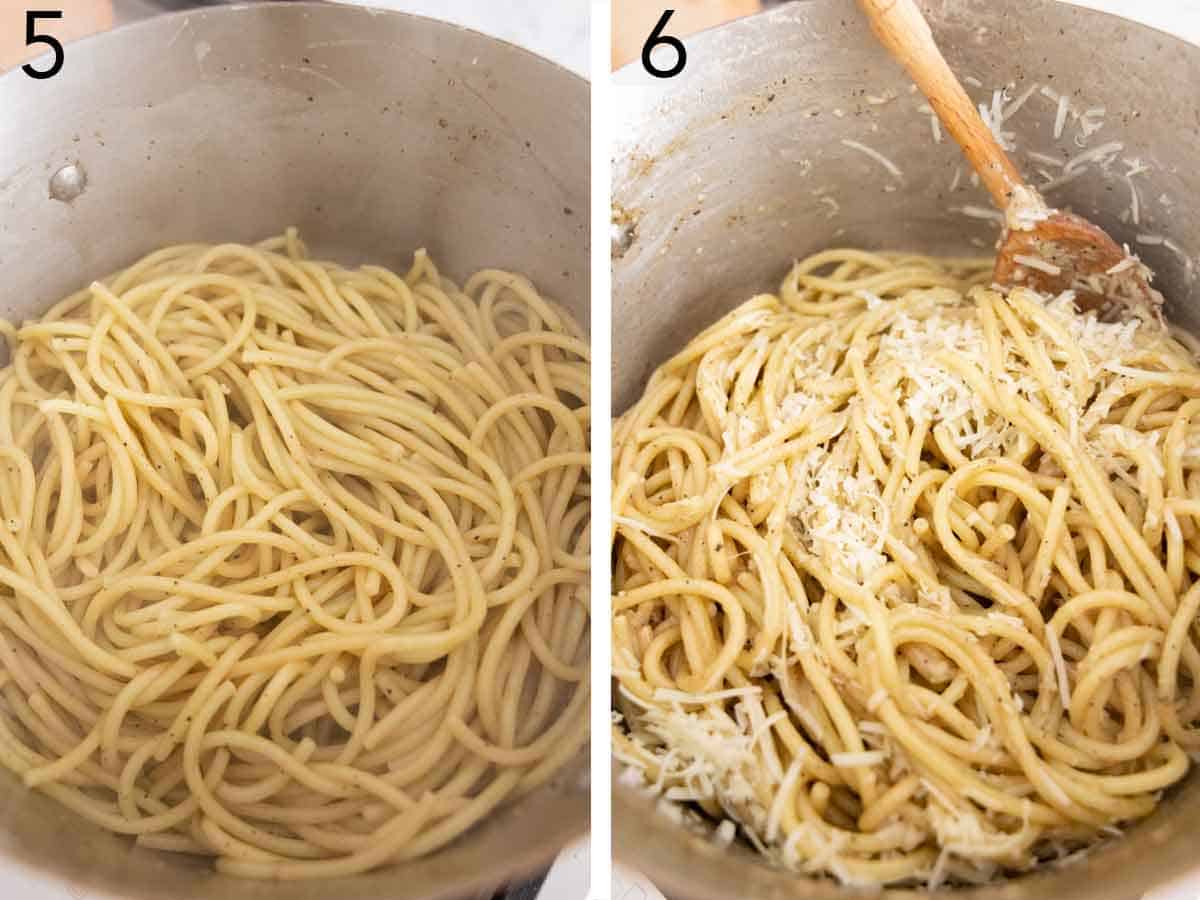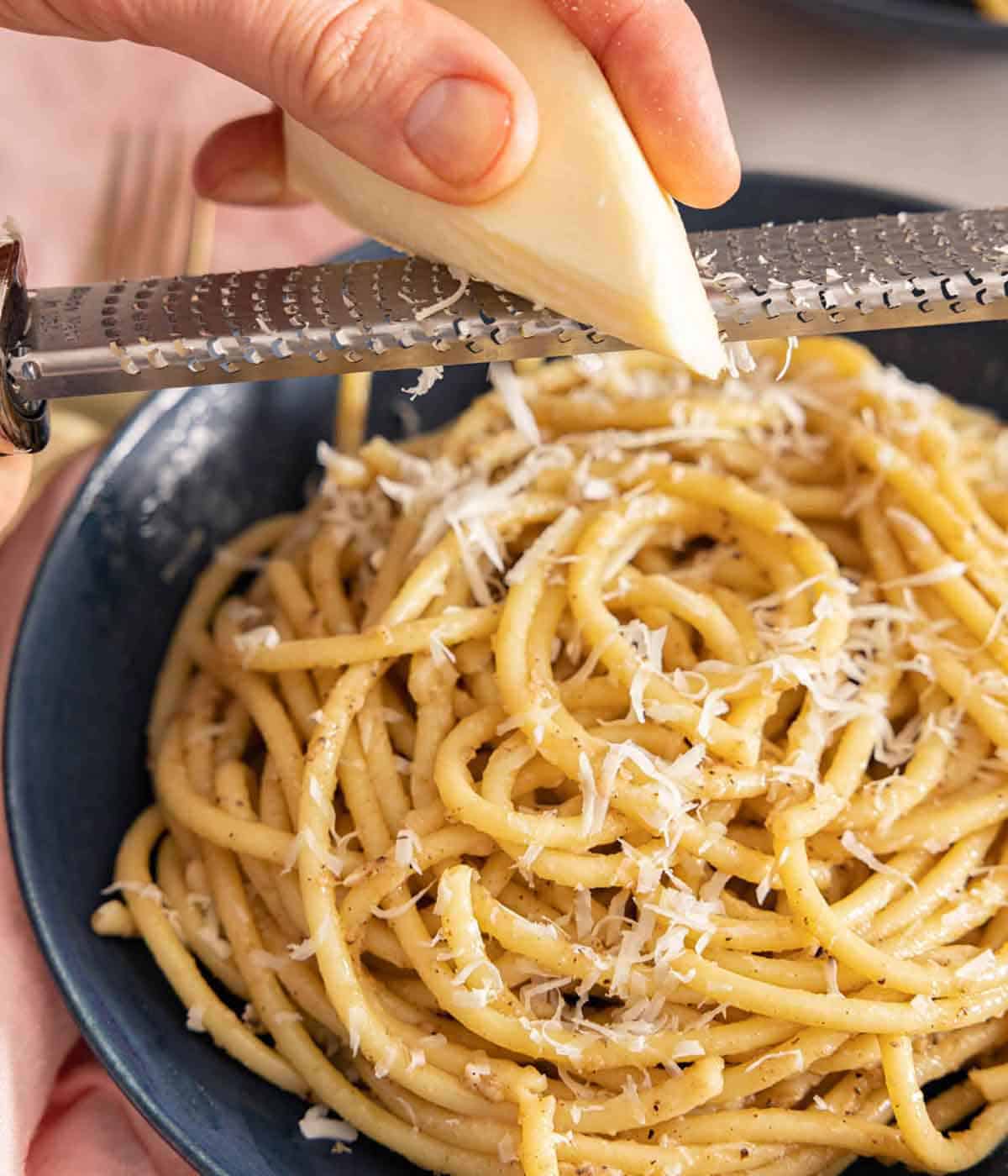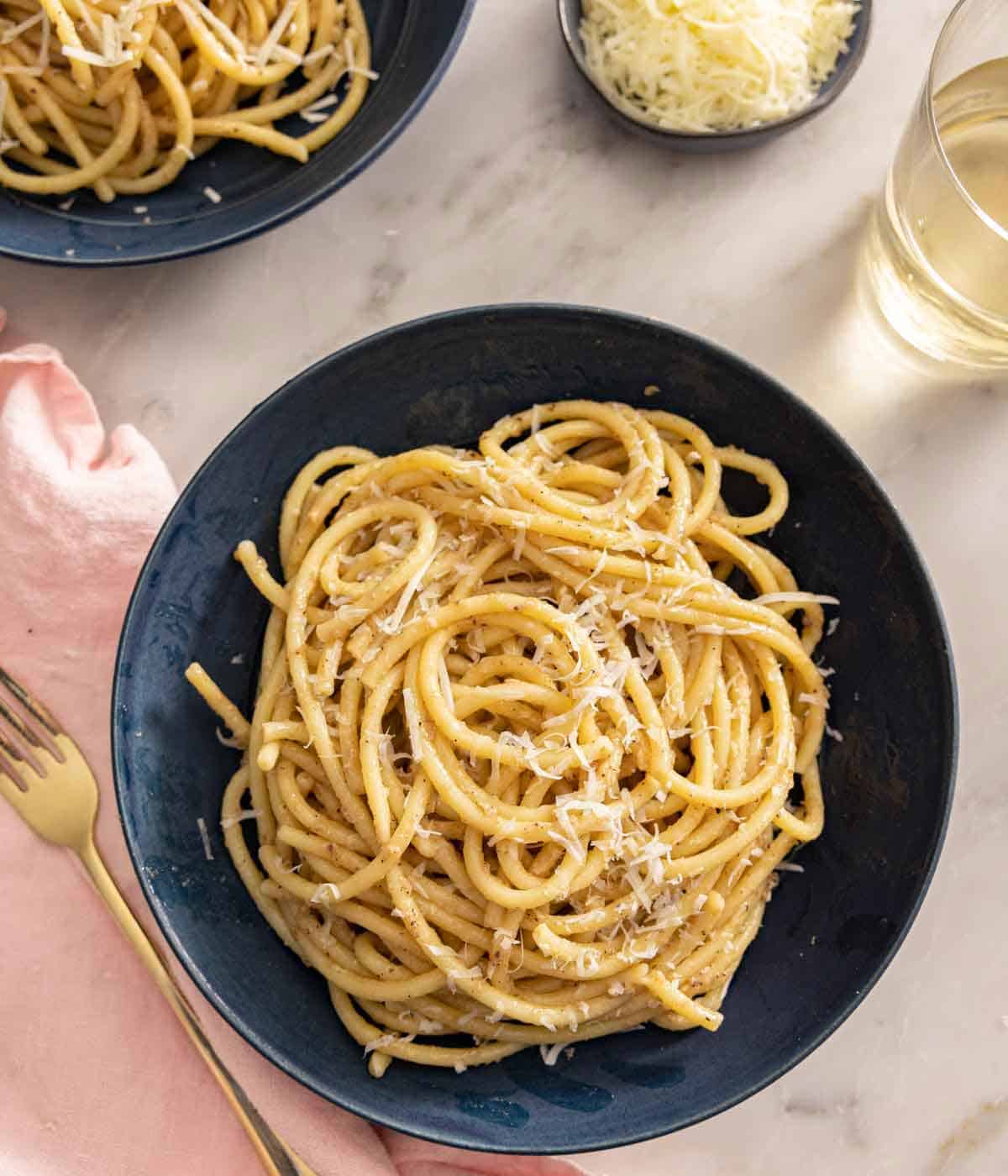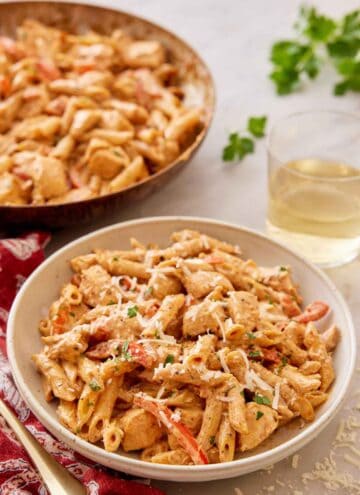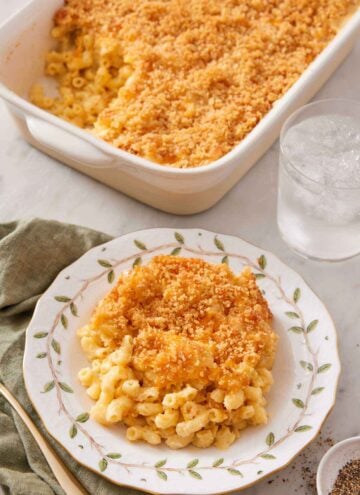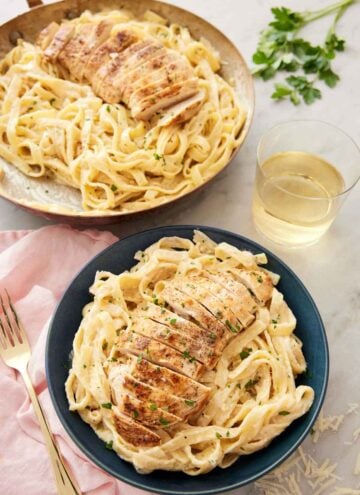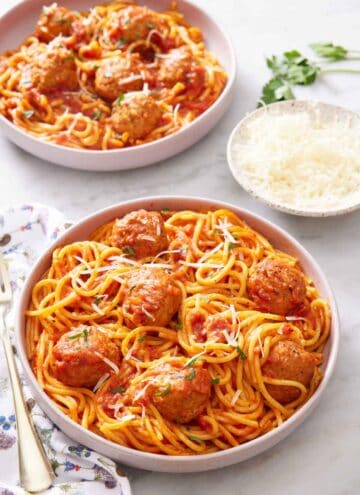If you want a simple pasta recipe with minimal ingredients, this cacio e pepe is perfect for you! This dish is a classic Roman pasta that literally translates to “cheese and pepper,” so if you’re a fan of those two things, it’s guaranteed to be an instant hit. It’s like a grown-up, fancier version of mac and cheese!
It’s important to use good quality ingredients for this dish as you only use 5 ingredients for this pasta. It’s also effortless to make as it’s not a very technical dish, so that you can whip this up for dinner in no time on a busy night. If you want another easy pasta recipe for dinner, then try my baked ziti recipe, chicken tetrazzini recipe, or chicken spaghetti recipe.
What You Need to Make This Recipe
Pasta — bucatini is preferred, but you can also use spaghetti noodles.
Butter — usually, traditional cacio e pepe does not use butter, but butter creates such a flavorful, rich sauce. It’s worth adding the butter!
Black pepper — freshly cracked pepper has much more flavor than ground pepper sold in jars. Black pepper is the star of the show, so it’s worth breaking out the pepper mill for this.
Cheese — you will need a good, aged, Pecorino Romano cheese. I recommend using a good-quality brick of cheese as the ingredient list is short, so the flavor will really shine through. Pecorino Romano is made with sheep’s milk, which has a strong and tangy flavor.
How to Make Cacio e Pepe
1. Grate the Pecorino-Romano cheese.
2. Fill a large pot or Dutch oven with 4 quarts of water. Bring to a boil over medium-high heat. Stir in the salt. Add the pasta. Cook until almost tender. Reserve 2 cups of the pasta water and drain the pasta.
3. Add the butter and swirl the pot until melted.
4. Stir in the pepper. Cook for 30 seconds, stirring constantly. Turn the heat down to low. Carefully add 1½ cups of the pasta water and bring to a simmer.
5. Add the drained pasta and toss with tongs to coat with butter. Sprinkle in half of the cheese.
6. Toss until well combined, and the cheese melts into the sauce. Remove from the heat. Repeat with the rest of the cheese. If the pasta becomes dry, add more reserved pasta water. Serve immediately topped with additional cheese and pepper, if desired.
Pro Tips for Making This Recipe
- Do not use pre-grated cheese. Pre-grated cheese comes coated in an anti-clump powder, so it will not melt nicely into your pasta, leaving it tasting gritty. It is worth the effort to grate the cheese yourself with a cheese grater.
- If you are sensitive to pepper, you can reduce the amount of ground pepper.
- For a bit of extra heat, add a few pinches of red pepper flakes.
- Make sure to reserve pasta water before draining the pasta. The starchy water helps create a creamy sauce that perfectly coats your pasta. Plain water will not yield the same results.
- The cheese will start to clump on the bottom as it sits and cools, so definitely serve this cacio e pepe recipe immediately.
- Feel free to add protein to the pasta, such as grilled chicken or sauteed shrimp. You can also bulk the pasta up with some vegetables such as spinach, kale, or broccoli.
Frequently Asked Questions
What should I serve with this pasta?
This is a simple but rich pasta, so you do not want a side to compete with the flavors! Try a simple side salad, garlic bread, dinner rolls, roasted carrots, roasted butternut squash, or sweet potato fries.
How do I store and reheat leftovers?
This pasta is so tasty that there are rarely leftovers! If you have some, transfer them to an airtight container, and once cooled, store it in the fridge. When ready to enjoy, I like reheating the cacio e pepe in a skillet with a splash of water to help loosen everything up. Cook on medium-low until the pasta is heated throughout, and serve with more cheese grated on top.
What is the best pasta to use?
Bucatini is ideal as it’s a long, smooth noodle that’s hearty and thick, so it holds up well with the peppery sauce. There is a hole running through the center of the noodles, so it fills with sauce, making the dish even better!
Can I use parmesan instead of Pecorino Romano?
We use Pecorino Romano in this recipe as “cacio” is the local Roman dialect word for Pecorino Romano! If you do not have any Pecorino Romano on hand, you could use parmesan cheese in a pinch. However, keep in mind that parmesan is made from cow’s milk and has a much milder flavor than Pecorino Romano.
If you’ve tried this Cacio e Pepe recipe, then don’t forget to rate the recipe and let me know how you got on in the comments below, I love hearing from you!
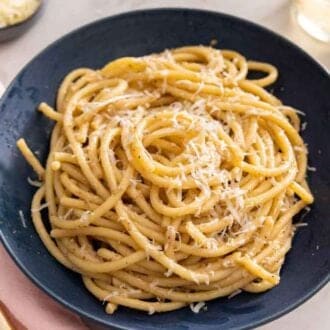
Cacio e Pepe
Video
Equipment
- Large Pot
- Collander
- Tongs
Ingredients
- 5 teaspoons salt
- 12 ounces bucatini or spaghetti pasta (340g)
- 6 tablespoons butter (85g)
- 1 tablespoon freshly ground black pepper
- 1 cup freshly grated Pecorino-Romano cheese plus more for serving (125g)
Instructions
- Fill a large pot or Dutch oven with 4 quarts of water. Bring to a boil over medium-high heat. Stir in the salt. Add the pasta. Cook until almost tender (Taste a piece of pasta - the texture should be slightly firm and feel like it needs to cook for a minute or two longer). Reserve 2 cups of the pasta water and drain the pasta.
- Return the pot to medium heat. Add the butter and swirl the pot until melted. (For extra flavor, cook until browned and nutty smelling.) Stir in the pepper. Cook for 30 seconds, stirring constantly. Turn the heat down to low.
- Carefully add 1½ cups of the pasta water and bring to a simmer. Add the drained pasta and toss with tongs to coat with butter. Sprinkle in half of the cheese. Toss until well combined and the cheese melts into the sauce. Remove from the heat. Repeat with the rest of the cheese. If the pasta becomes dry, add more reserved pasta water. Serve immediately topped with additional cheese and pepper, if desired.
Notes
- Do not use pre-grated cheese. Pre-grated cheese comes coated in an anti-clump powder, so it will not melt nicely into your pasta, leaving it tasting gritty. It is worth the effort to grate the cheese yourself with a cheese grater.
- If you are sensitive to pepper, you can reduce the amount of ground pepper.
- For a bit of extra heat, add a few pinches of red pepper flakes.
- Make sure to reserve pasta water before draining the pasta. The starchy water helps create a creamy sauce that perfectly coats your pasta. Plain water will not yield the same results.
- The cheese will start to clump on the bottom as it sits and cools, so definitely serve immediately.
- Feel free to add protein to the pasta, such as grilled chicken or sauteed shrimp. You can also bulk the pasta up with some vegetables such as spinach, kale, or broccoli.



